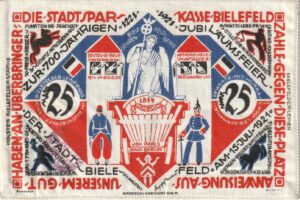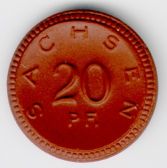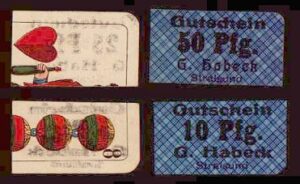What is a Notgeld?
Notgeld in Germany
First period (1914): due to the outbreak of the WWI due to difficulty of finding imperial silver coins (mostly 50 Pfenning and 1 Mark).
Second period (1916-1922): due to the lack of raw materials and then small denomination coins began to run short. Moreover, from October 1918, due to foreseeable defeat of the war, the population began to accumulate cash and “consequently” the State asked to the industries and cities to issue banknotes to remedy the shortages.
Third Period (July 1922): due to the workers strike of the ReichSdurckerei (now Bundesdruckerei “Federal Press”).
Fourth Period (August 1923): due to inflation new regulations have been created for the management of notgelds.
The particular design, the colors, the stories and the anecdotes told attracted the attention of collectors so much that created notgeld for them, the Serienscheine.
What kind of material?
For the issue of notgeld wasn't used only papers but also metallic coins, leather, linen (Leinengeld), postage stamps, porcelain (Porzellangeld) and sometime playing cards (spielkarten)


